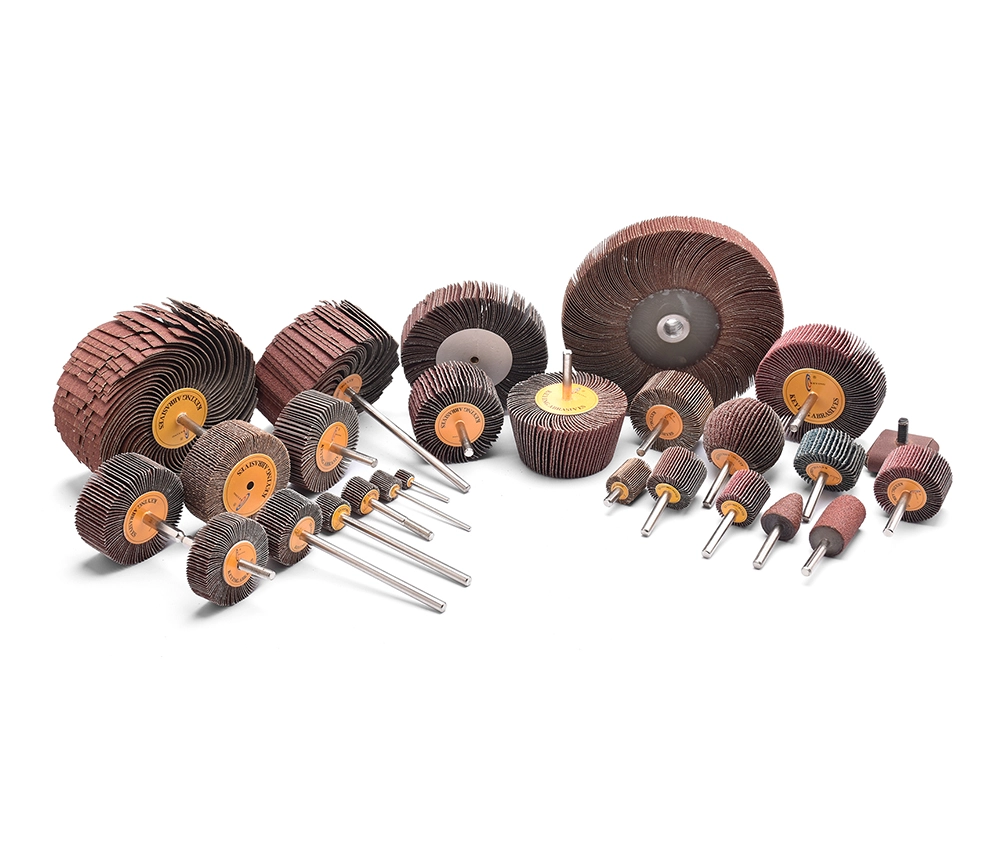
Dec 20-2017
Do you know how the hardness of grinding wheels is defined? Is it the same as the hardness of abrasive grains? Today, we will analyze the hardness of grinding wheels and the principles to consider when choosing the hardness of grinding wheel discs.
How to choose the hardness of the grinding wheel from the abrasives supplier depends on the material of the workpiece being ground, the surface quality requirements of the workpiece, the efficiency of grinding, etc. When selecting a grinding wheel, it is important to note that the hardness should be appropriate. If the grinding wheel is too hard, the worn abrasive grains cannot fall off in time, resulting in a lot of grinding heat and causing burns on the workpiece. If the grinding wheel is too soft, the abrasive grains fall off too quickly and cannot fully exert their cutting effects. "Grinding wheel hardness" is the degree of difficulty for abrasive grains to fall off from the surface of the grinding wheel under the action of grinding force. It is a different concept from the hardness of abrasive grains.
The imbalance of the grinding wheel flap sanding head is mainly caused by inaccurate manufacturing and installation of the grinding wheel, causing the grinding wheel to not be aligned with the rotating shaft. The harm caused by the imbalance is mainly manifested in two aspects. On the one hand, when the grinding wheel rotates at high speed, it causes vibration and produces polygonal marks on the surface of the workpiece. On the other hand, the imbalance accelerates the vibration of the spindle and the wear of the bearings. When it is serious, it can cause the grinding wheel to rupture and even cause accidents. Therefore, for the values greater than or equal to 200mm, the grinding wheel should be statically balanced after being mounted on the chuck. After the grinding wheel is reshaped or if the imbalance is found during work, the static balance should be repeated.
Workpiece hardness
The harder the workpiece material, the softer the hardness of the grinding wheel should be selected, and the softer the workpiece, the harder the hardness of the grinding wheel should be selected.
Processing contact surface
When the contact surface between the grinding wheel and the workpiece is large, a softer grinding wheel should be selected to make the abrasive grains fall off quickly to avoid burns on the surface of the workpiece.
Fine grinding and forming
When fine grinding and forming, a harder grinding wheel should be selected to ensure the necessary shape accuracy of the grinding wheel.
The size of the grinding wheel particle size
The higher the particle size number of the grinding wheel, the lower the hardness selection should be to prevent the surface structure of the grinding wheel from being blocked by debris.
Workpiece material
When grinding ductile and tough-colored metals or materials with poor thermal conductivity, a softer grinding wheel should be selected.
For particularly difficult-to-grind materials, a super-hard grinding wheel should be selected
This type of grinding wheel has a higher grinding coefficient than ordinary grinding wheels, is less susceptible to wear, and can cut and polish the workpiece with minimal pressure.
We hope that when choosing the hardness of the grinding wheel, you will consider selecting the appropriate abrasive and tool. Under the premise of ensuring the smoothness of the surface of the workpiece, try to choose a coarser and harder grinding wheel to improve the efficiency of the grinding wheel.